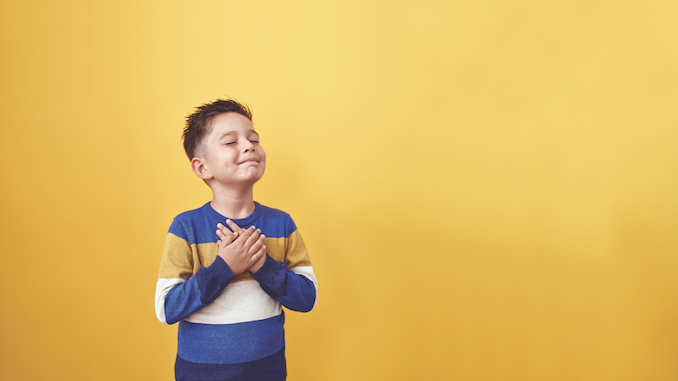
Published: October 28, 2023
By: By Sandi Schwartz
Focusing on the positive boosts the body, mind and spirit. It gives us energy, inspires us and transforms us. In a nutshell, it provides life with meaning by thinking of life as a gift.
Only recently have scientists begun to study the benefits of gratitude. Vitamin G, as some like to call it, plays a critical role in health and happiness. Here are some ways to give this gift to your children.
Top 10 Benefits of Gratitude
Dr. Robert Emmons, a leading scientific expert on gratitude, conducted studies involving gratitude journals and found that when people regularly engage in gratitude, experience these measurable psychological, physical and interpersonal benefits. Findings show they:
1. Feel better about their lives overall.
2. Experience higher levels of positive emotions like optimism, enthusiasm, love and happiness.
3. Are kinder and more generous to others
4. Have fewer physical problems including pain
5. Exercise more regularly and eat healthier
6. Sleep better
7. Visit the doctor more regularly
for checkups
8. Feel less stressed
9. Can cope with stress more
effectively and recover more quickly
from stressful situations
10. Live longer. On average, being thankful adds seven years to our lives.
How It Works
Why does saying thank you have so many benefits for us? When we count our blessings, we interrupt the cycle of negative and fearful thoughts, which allows the stress system in our bodies to recover. Research shows that when we are thankful, we love our lives and want to make sure we stick around long enough to enjoy them. Also, when we receive praise from others, our brain releases the chemical dopamine, which encourages us to do more to receive such praise. This makes us want to thank others and make them feel good as well.
How To Teach Children Gratitude
In her book 10 Mindful Minutes, Goldie Hawn explains that being thankful is not a natural instinct; children need to be taught how to do it. She asks parents to be a good example to their children by thanking them often. It is important to explain to our children why they are being praised. Another important tip is to be careful not to judge how our children express gratitude. Young children under age 7 may not fully grasp the concept. It is not what they are thankful for, but that they are learning how to express gratitude that matters. If they want to be thankful for a toy, that is okay.
Keeping a gratitude journal is the backbone of gratitude scientific research. Anytime you read about gratitude, you will be asked to write down five points you are thankful for that day or week on an ongoing basis. Over time, you will begin to experience the benefits of gratitude such as stress reduction and optimism.
Some people don’t care for the traditional journal approach; they may find it repetitive and boring. Fortunately, there are many ways to express gratitude as a family, such as starting a gratitude routine. Each family needs to discover what is most effective for them. Plus, you don’t want it to become an annoying chore — it is supposed to make you happier after all.
Here are some ideas for fun, creative gratitude journals using a variety of media. As technology changes and our children learn more about what they can do with computers, tablets and cell phones, we should show them how to use these tools for something positive — to make them feel better.
5 Ways to Keep Gratitude Journals With Your Kids
Blog
Try setting up a family gratitude journal blog (password-protected, of course). You can even involve grandparents and cousins, no matter how far away they live. You could introduce this idea at the Thanksgiving table and challenge everyone to submit a post each week throughout the year.
Audio Recording
Children love to hear their own voices. You can have them record their journal on a phone or tablet.
Once you have the recordings, you can get creative by posting them online for others to listen to or you can even put it to music and create a song or rap using highlights of what they said.
Videos
Children also love watching videos of themselves. They will have a blast talking about what they are thankful for and watching it over and over. Maybe have them pretend to be reporters and their gratitude is the news of the day. Or they can act out scenes from the wonderful moments they had.
Drawings
For children who are more visual and artistic, ask them to draw or paint what they are thankful for at the time. You can then put the artwork together in a book organized by month or year. Create your own handmade journal or take pictures and use an online slideshow to present the images.
Collage
Looking for pictures in magazines or online to build a gratitude collage is a fun family project. And no artistic talent is required! Cutting is also a great way for your child to build fine motor skills.
Enjoy saying thank you with your children in innovative ways. You can mix and match the suggested ideas or come up with your own.
